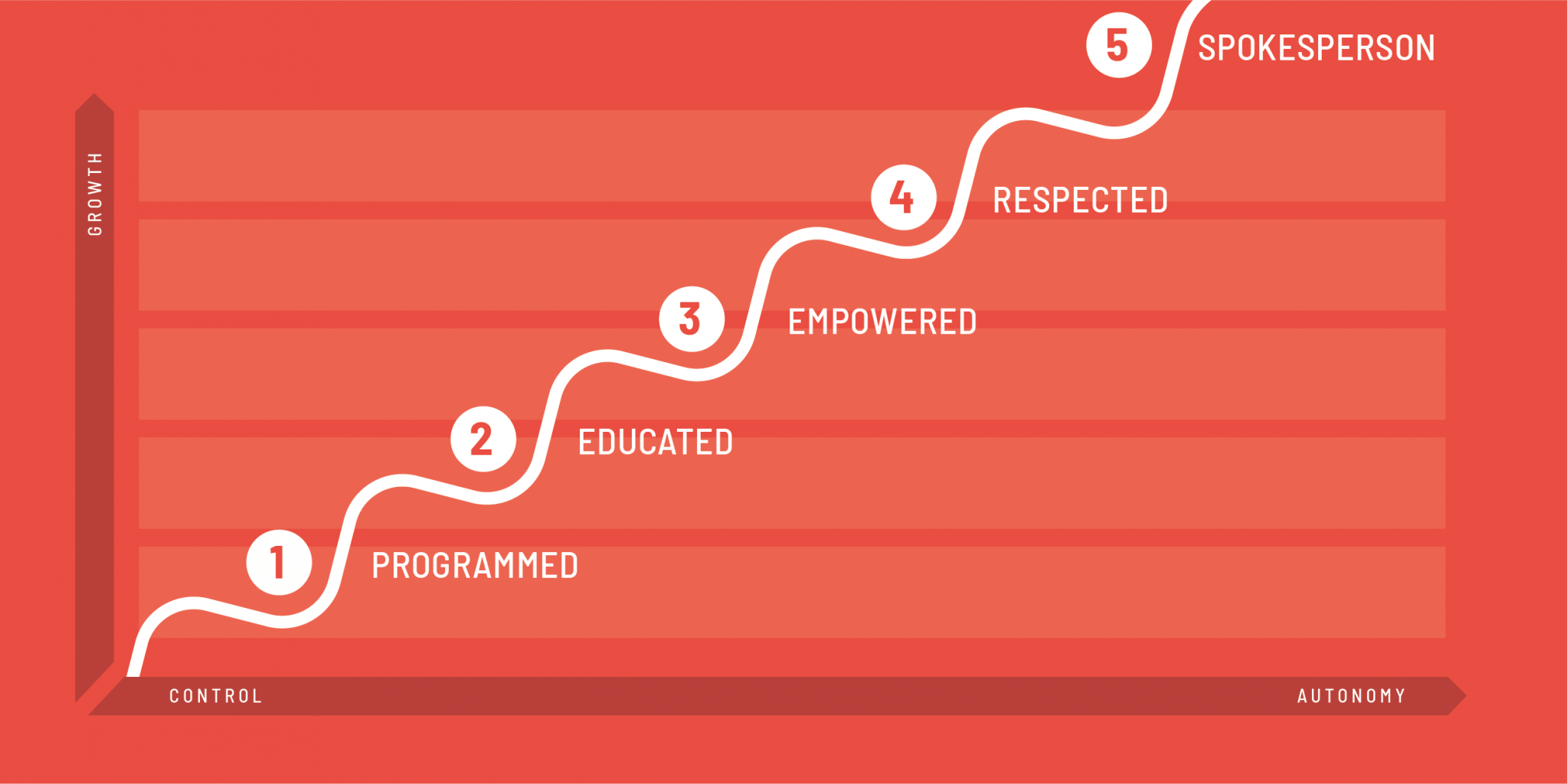How leading HVAC companies grow - without burning out their team
The previous article
on IVY (Ideal Vision of Yourself) provides a good lead into this article.
If you have 10 minutes, give it a read.
Growth Struggles
As a service company tries to scale up, barriers to growth are encountered. Faced with these
barriers, companies often drag out the usual suspects:
- A lack of sales and marketing
- A lack of desire among staff to improve quality and response times
- Difficulty in hiring the "right" workers and the "right" managers
- The need for more team building to correct "cultural" issues
Working harder on these usual suspects will rarely have a lasting positive impact. Most companies
have already been trying without success, yet remain convinced that if they could just try
harder, then eventually success will materialize. The struggle seems endless. Without any other
option, they keep at it, day after day. What else can a company do?
To understand the true barriers to growth, it is helpful to first understand
what growth looks like.
Understanding What Growth Looks Like
As companies increase in size, they transition through periods of slow growth and periods of high
growth. This is a non-linear path. Instead of improvements happening incrementally over long
periods of time, growth occurs in spurts, followed by periods of relative stability. These
periods of stability are normal. However, they can become stagnant if permitted to last too
long. Instead, the stable periods are opportunities to solidify the changes from the previous
growth spurt, and to act as a staging platform for the next level. They should not be permitted
to become the new status quo. In other words, while the resulting growth curve is non-linear,
the growth effort should be continuous. Knowing why growth occurs in spurts, and
understanding the barriers preventing the next stage, is key.
To help understand company growth patterns, the IVY methodology details 5 distinct levels on
the growth curve, with entry into each level blocked by a set of well defined barriers.
Companies are stable at any given level, but not as they transition between levels. During a
transition period, as a company moves from one level to the next, the team risks sliding back,
else it succeeds and reaches the next level, which becomes its new stable point.
PEARS is an acronym that provides a name to each level, which reflects how an employee feels
working in a company operating at that level: Programmed, Educated, Autonomous, Respected,
Spokesperson.

Five Operating Levels
The graph above illustrates the PEARS growth pattern. The Y-axis represents growth and
profitability, while the X-axis represents an increase in distributed decision making or
empowerment. The more empowerment, the more profit. However, a deeper understanding is to view
profitability and empowerment as natural consequences of something much more fundamental: IVY
Alignment and IVY Opportunities. In short, IVY is an Ideal Vision of Yourself, and it
is what everyone in a company is working toward. (No, their IVY is not to make your business
grow and be profitable, not unless you have motivational alignment) See the previous
article
for a detailed explanation of what IVY is. In this view, the
Y-axis is IVY Alignment and the X-axis is IVY Opportunities.
LEVEL 1 Programmed
Most companies operate in the Programmed level. It is similar to a command-and-control military
mindset. The organizational structure is very hierarchical, and the resulting culture is one of
fear and complacency. The belief is that people higher up in the hierarchy are smarter, and care
more about quality, responsiveness, and customer care relative to people lower in the hierarchy.
IVY Opportunities and motivational alignment are close to nonexistent at this level.
LEVEL 2 Educated
At this level, through increased trust, workers start being given access to previously siloed
information. They are able to see the big picture and learn
how their actions affect the whole.
Information asymmetry and its negative effects are reduced.
Frontline workers start to experience basic IVY Opportunities. Motivational alignment increases. Profit
margins increase.
Level 3 Autonomous
Workers are now given sufficient tools and autonomy to make customer decisions without always
requiring management's approval. The organization's hierarchical structure starts to flatten,
and this changes the culture where previously management had a monopoly on decision making and
customer care. IVY Opportunities become significant for workers and start to increase for
management also. Motivational alignment starts to take hold. Growth accelerates as more and more
employees start moving in the same direction.
Level 4 Respected
At this level workers have been elevated to being respected professionals in their fields, and
are regarded as equal partners in making business process design decisions. The business process
evolves without mandatory management oversight. IVY Opportunities and motivational alignment are at an
all time high. Not only does growth and profitability continue to accelerate, company
innovation, evolution, resilience, and adaptability are now an inherent part of the business.
How the company does things becomes more important compared to what the
company does.
Level 5 Spokesperson
Level five is truly extraordinary in that most everyone in the company are able to represent,
promote, and share the unique views and culture held within their company. The employees
are regarded as industry experts within their respective fields. The company is viewed
internally and externally as an ideal source of IVY Opportunities for personal growth. Some
employees are loyal for decades, others come in, grow, and move on, promoting the company as an
ideal place to learn, to grow, and to purchase quality services from, second to none.
Why the company does things becomes the focus.
Consider the following:
- Responsibility isn't commanded, it is given.
- Quality increases because the workers feel personally connected to the work they do, not
because management says it must.
- Response times improve because workers do not want to keep their customers waiting and not
because management measures it and demands improvements.
- Workers treat customers with respect, if they themselves are treated with respect.
In order for people to believe in you as a leader, you must believe in your people. Trust is a
reciprocal relationship. Employees want the same things people in management want:
- To have responsibility
- To be heard and listened to
- To have the opportunity to learn from success and failure
- To be treated with respect
- To have the opportunity for personal growth
Collectively, delivering the items above creates an environment rich in IVY Opportunities. This
is the X-axis on the PEARS chart, and it enables companies to move up along their growth
path.
Limited Growth
It may seem counter-intuitive that spontaneous, seemingly effortless growth is a side effect of
the latitude you give your team. In other words, less effort gives more
results. On the flip side, we all know that more effort can provide more results, however we
often find these results are limited and short-lived. If growth and profit are forced, then
these are capped by how much of your personal life you are willing to sacrifice for the
business. It is an even trade at best, and more often a miserable existence of servitude. Ask
yourself: Do you own your business (or your job position), or does your business own you? Are
you able to walk away, and come back months later to find the business not only running as
smoothly as before, but also running better than when you left?
Solution
PEARS, and the fundamental force underlying it - IVY - provides a clear path toward growth and
profitability, without increasing measurement, control, discipline, enforcement, punishment, or
ill conceived bonus systems. As a savvy business manager once said after success with PEARS
"I've come to learn that this is more about letting go than anything else."
"I've come to learn that this is more about letting go than anything else."
The five distinct levels of PEARS provide an advantage because it enables us to focus on only the
set of barriers between the level your business is on and the level you are trying to reach.
Having a road map makes the journey easier, and avoids getting lost along the way. Each level on
the PEARS road map becomes easier and easier to implement because each level frees up more and
more time, and because all levels build upon the same fundamental concept: Creating an
environment that allows people to become who they want to be – to achieve their IVY - inherently
structures a business to run itself.


